We had 11 days on Cuba and managed to see 10 cities and 2 national parks. For many, this intense trip could seem too hectic, but for us this rhythm is quite usual. We can’t spend more than 3-4 hours on the beach or stay in one city longer than 2 days. We are hungry for new places, new things to do and to see. Probably, this will change with time, but while we are young we want to take as much as we can from every trip.
In this post I will write about our impressions from the cities on Cuba and its national parks (the complete route and a map of our trip you can find in my previous post: Link) Let’s go!
- Varadero
On the second day after arrival to Cuba we headed to Varadero. This city is not overestimated – it is indeed very touristic. If you dream about an idyllic desert beach, Varadero is not for you. The beach is beautiful, but only early in the morning and late in the evening you have a poor imitation of solitude. In the morning hours we had a very pleasant and entertaining getting-to-know-each-other experience with gorgeous pelicans.

Varadero beach
If it gets too hot at noon, check the small park Parque Josone – there is an artificial lake with swans, ducks and ducklings. If you are attentive, you can spot other creatures as well. Tiny lizards with rolled tails are the cutest.
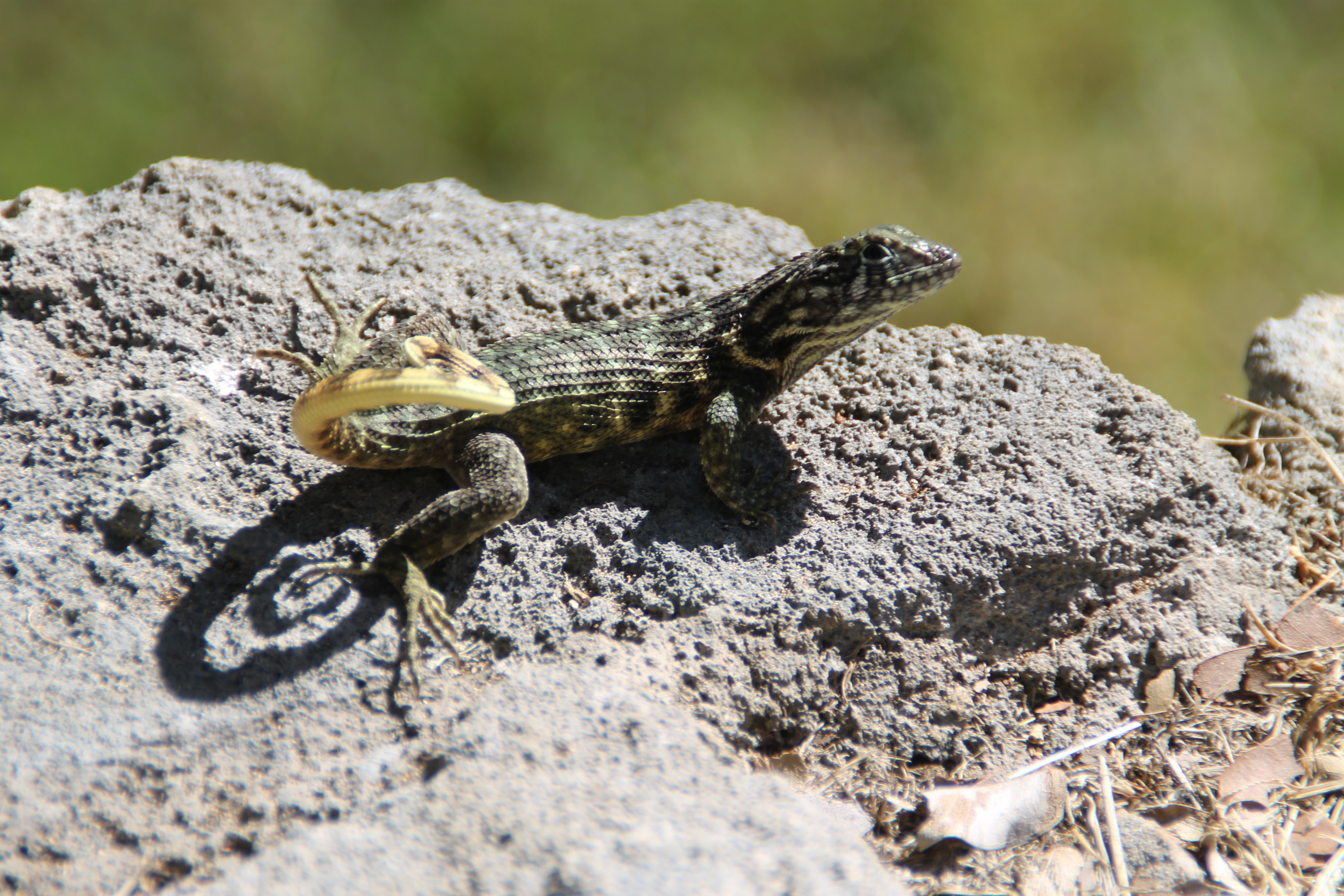
Cuties in the Parque Josone
In Varadero you will find restaurants and bars on each and every step, but the prices are close to European. Nevertheless, we found a local place with tasty food for small money: Cafeteria Julia Paraiso. You will find it 50m from the intersection of Calle 54 with the main street direction beach.
Another very attractive place with live music in the evenings is restaurant Esquina Ristorante on the intersection of Calle 36 with the main street (very close to the Viazul terminal). In the evening many mobile stands offer a Pina Colada or other cocktails in an attractive glass made of a coco or a pineapple.
- Mantanzas
A small city, an interchange point between Varadero and Santa Clara. For me it was an exhibition of old-timers sleepily waiting for their owners.

Bus station in Matanzas
- Santa Clara
A very small city famous only because of the impressive monument and the museum of Ché Guevara. By the way, the museum is closed on Mondays. You can already guess what day a week we were there…
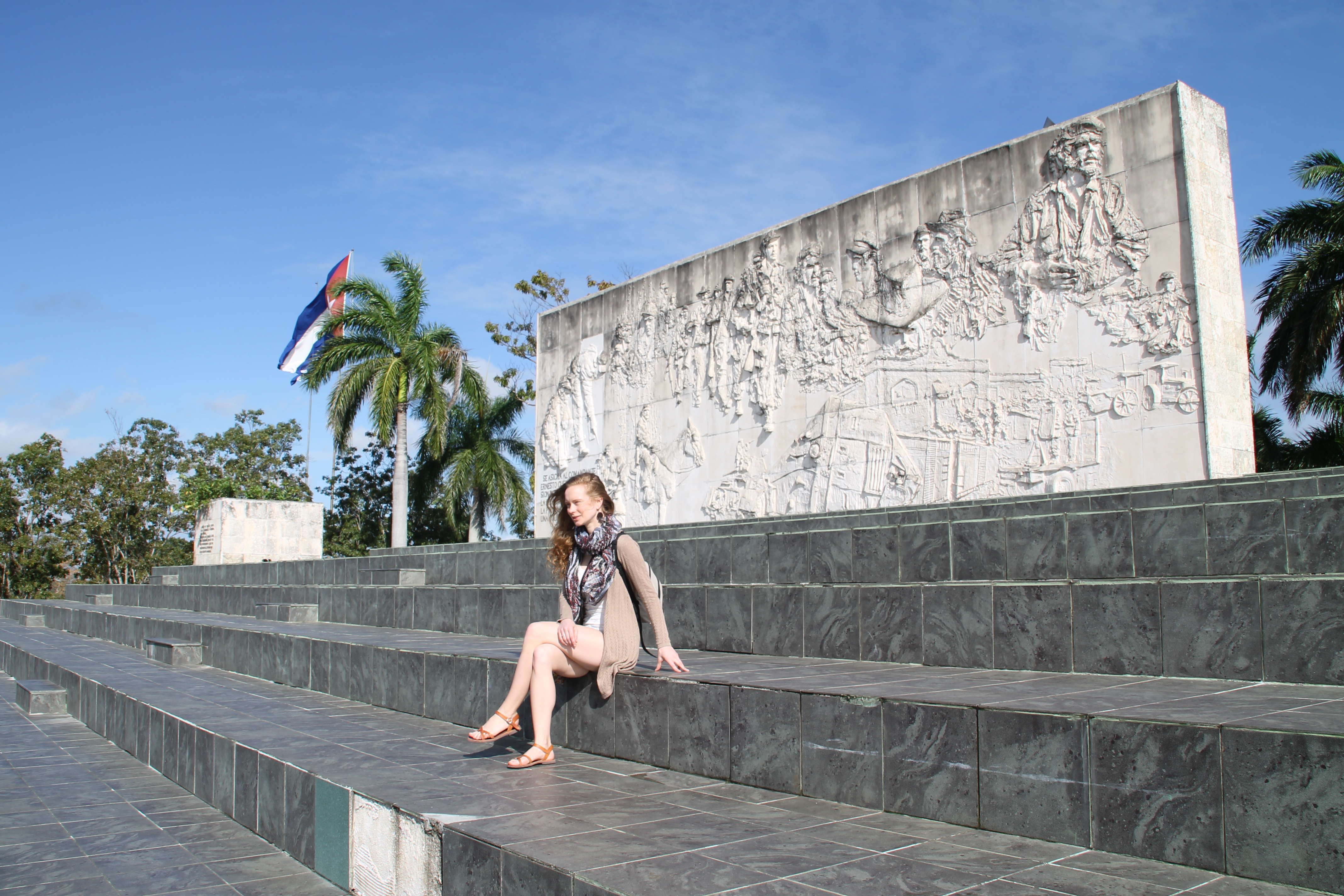
Monument to Che
- Remedios
My absolutely favorite city on Cuba after Havana. In Remedios everything is about colonial style. Discreet but beautiful buildings, big rooms with unthinkably high ceilings. Such tremendous ceilings I haven’t seen in my life! They are literally 5 meters high. Lovely main square with colorful town hall, several restaurants surround the square.
Lazy dogs (and young men) sleeping on the streets. Catching atmosphere of leisurely easy being.
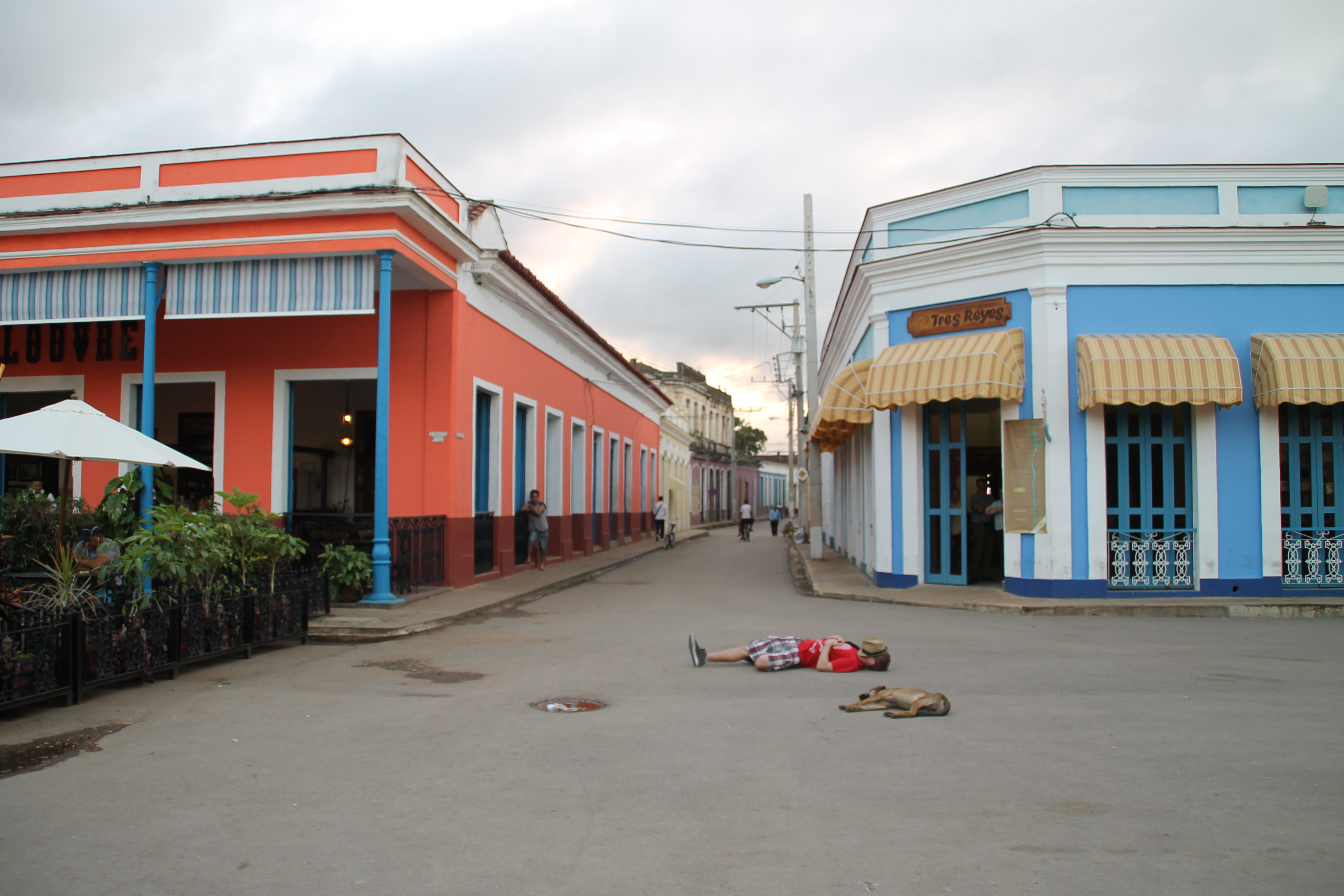
Chilling in Remedios
When you stroll along the streets you can see people playing chess in what you can call a chess club.
If you unintentionally glance into open windows, you are surprised how posh and gorgeous the living rooms look like. And many of these elegant buildings have rooms for rent. Our casa was in one of such buildings.
In Remedios to some degree you forget that Cuba and Cubans are in general quite poor. This city stays in the times when Cuba was prosperous and Remedios was one of the centers of sugar and cacao industry.

Main square in Remedios
A tip for a good local Cuban restaurant: the address is Brigadier Gonzales, 36. No signboard or name on the door, but in the evening you will see tables and local people eating inside. We met there a very nice family: a mother, a father and a daughter. The mother spoke very decent English. With the father we could express ourselves in our broken Spanish and actively gesturing. But it worked out very well; we had a dinner and then a drink together, talking about life in Germany and on Cuba. The father was a veterinarian by education, but had to work as a construction worker to earn enough money to support his family…
- Cienfuegos
On the bus to Cienfuegos we met a nice guy from London, Alex, a filmmaker and cigars expert. We chatted pleasantly the whole trip and decided to meet later on the beach at indefinite time – as all roads lead to the beach. Unfortunately, there is no beach in close proximity, you have to take a cab and drive around 30 minutes. Sad to miss a good acquaintance, we walked along the coast, looked at the Hemingway’s house and landed in a small bar in the harbor. In ten minutes Alex joins us out of nowhere: he also didn’t find a beach and decided to have a stroll near the ocean. What a serendipity!
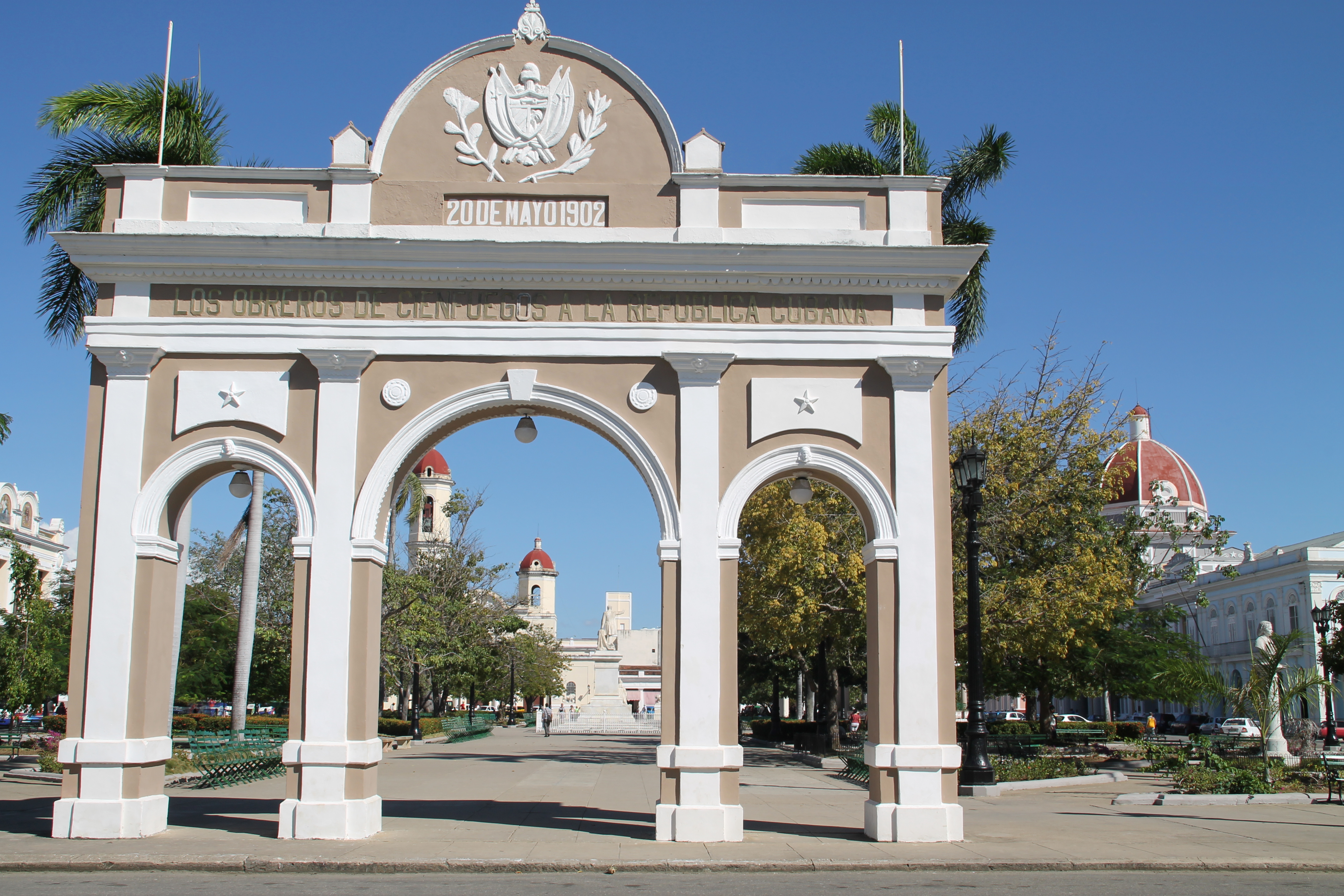
Cienfuegos
Reunited, we checked the city center and got a plan to find some good local rum and have a nice rum-cigar break. An insider tip: try Ron Jagua and take with you as a gift– delicious 35% rum from the factory nearby. You can find it in local supermarkets for about 2,5 CUCs. We needed something not so famous and banal as Havana Club and Santiago de Cuba which you can find in Germany as well, but something “exotic”. Jagua was the best choice ever – smooth, delicious, delicate. We divided a bottle by three of us and had an awesome evening on the coast. Afterwards we were desperately searched for this brand in other cities but without success…

With rum and cigars on the road
- Trinidad
This city is undeniably very touristic (many souvenir shops, plenty of tours start from this city) and wonderfully historic: you see hilly cobblestone streets and small colonial houses wherever you go. At night in the center almost every door leads you to a restaurant or a fancy bar. Trinidad, by the way, is a UNESCO site: the beautiful Plaza Meyor in the very heart of the town is worth taking series of pictures. If you want to go dancing or just listen to the Cuban music sitting on the old stairs, go to Casa de la Musica.
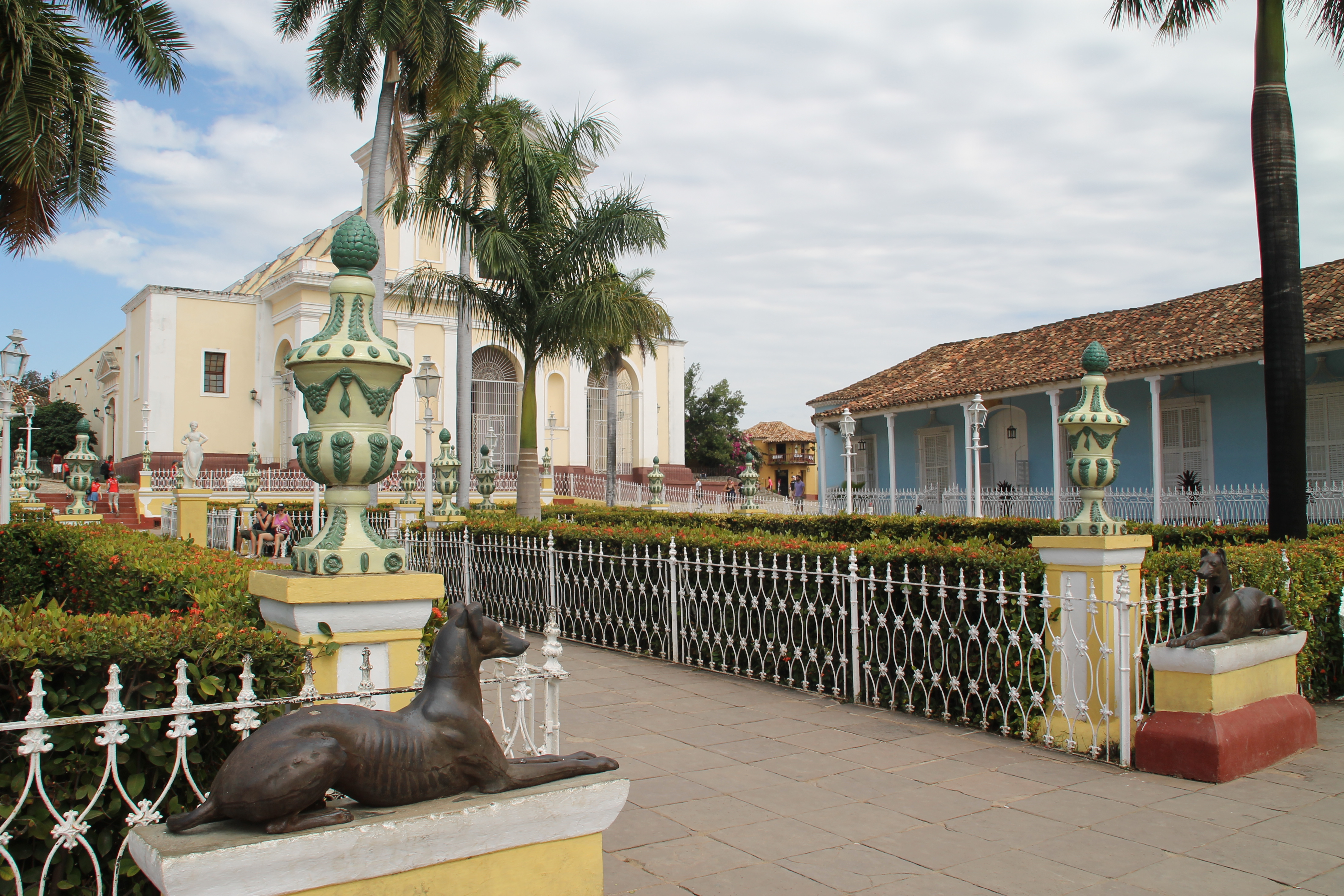
Playa Meyor in Trinidad
Another insider tip: a perfect place to eat lobster is Restaurant Malibran (S. Bolivar 507, Tel.: 53561811). The owner’s name is Ivan and you may be lucky to meet him on the beach Ancon where he catches lobsters and receive a personal invitation and a good offer (a lobster, a salad, rice and vegetables plus a cocktail for 15 CUC). The portion of lobster was delicious and so huge that we both were soon completely full and irreversibly lazy, not able to do anything else but stroll along the streets to our casa.
If you want to enjoy the view to the city from above, visit the house of the former sugar baron Cantero (C/ Simon Bolivar 423, open 9-17, entrance fee is 1 CUC pP). Otherwise head to the North and have a small hike on the hill. This area is far from prosperity; there you will meet barefaced Cuba, other side of this touristic city, nude and poor. It is hard to imagine that only 500 m separate these opposites.

View from above
The next day we took a trip to the national park and to the waterfalls (booked 45 minutes before the tour starts, but it was pure luck … it is always better to have a bigger time span to ensure the successful booking, so do it at least the evening before). When on the tour, think about proper shoes – the flip-flops or unstable sandals will not go because the road is partly stony and very slippery. Take bikini with you as you will be allowed to swim in the waterfall.
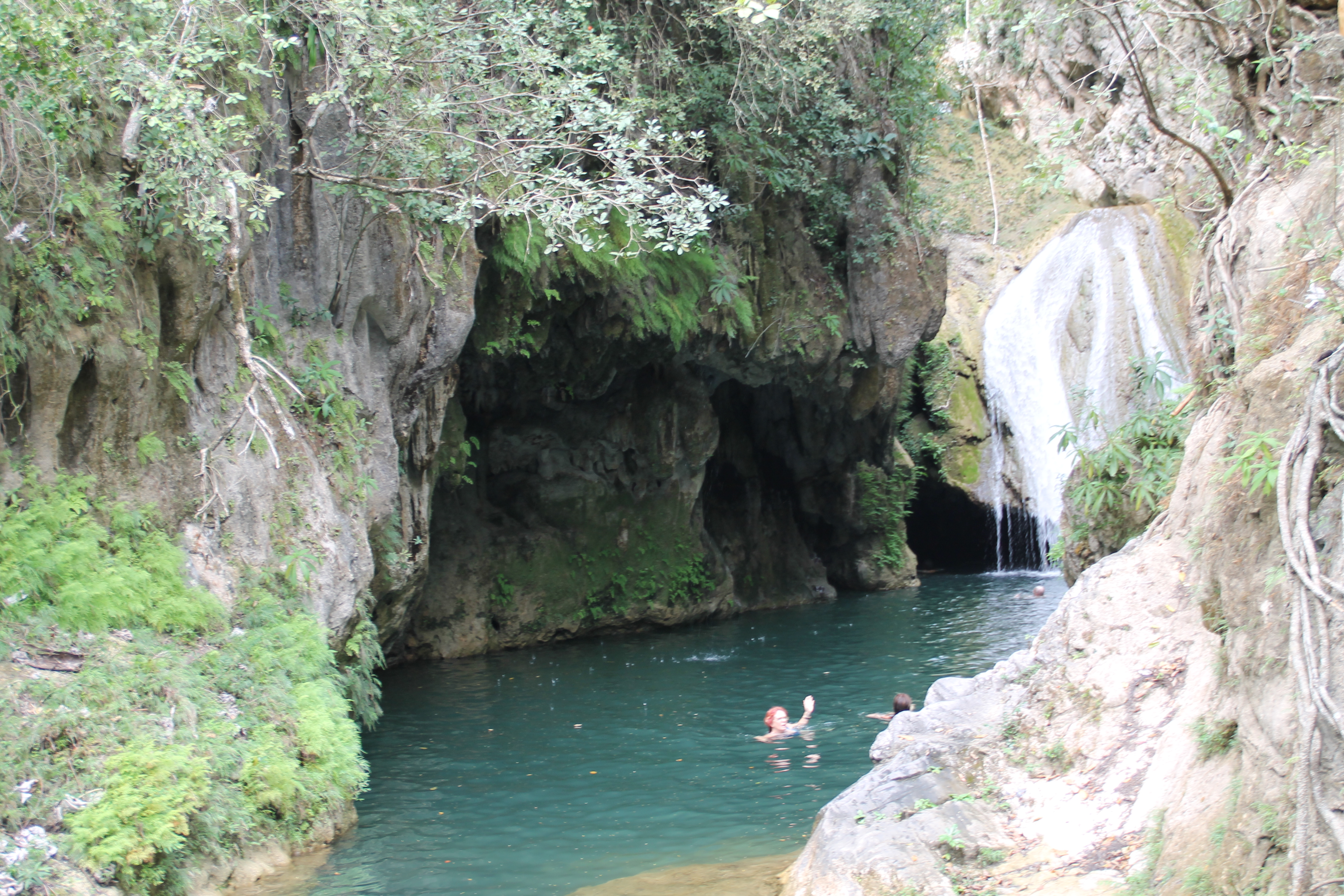
Waterfall in Parque Natural
The water is reasonably chilling, very refreshing and clean. For me, the most exciting part was the beehives of wild bees dangling from the cliffs…

Beehives
- Playa Giron
Very small, non-touristic village. We had difficulties to find a restaurant to have dinner. Probably, in the whole village there are only three restaurants. The beach called Coco is presumably the only thing that attracts tourists here.
- Pinar del Rio
A bigger but less famous than Viñales city in West Cuba, called after pine forest surrounding the city. Pinar del Rio is known to be Mecca of tobacco, the center of tobacco industry. We’ve been there only couple of hours before heading to Viñales.
- Viñales
This small city became very touristic: almost every colorful one-story wooden house with porches is a casa. From Viñales start many tours to the Viñales valley famous for its tobacco plantations and red soil. From Viñales two beautiful beaches could be reached as well: Playa Jutias (we travelled there and can confirm that this is very worth it) and Cayo Levisa (the trip takes the whole day because you can reach the island only by boat from a nearby village that lies about 1-1,5 hours from Viñales). You can book all tours the day before on the main street –several tourist offices are located there. We frankly tried to go to the beach on our own, without an organized group, but no one told us where the buses collectivo stop; so we had to accept the conditions of the agency.
On our last day on Cuba we hiked in the Viñales valley. It is listed as UNESCO World Heritage Site, by the way. The hiking tour starts next to the hotel “Hotel Ranco San Vincente”and costs 5 CUC/pP. When we arrived to the hotel, there was no obvious sign of a hiking trail or a national park. We had to approach the hotel personnel and ask for directions – this was difficult as well as they couldn’t understand that we wanted to hike alone and didn’t need an organized tour. Finally, they grasped what we needed and showed us the right way. After walking 300 meters we were stopped in doubt again in front of the big gates, looking at the crossroads, not sure which path to take and if we had to pay at all, when a ranger approached us and asked what type of a tour do we want – hiking on our own or a tour with a guide. Of course, we preferred the first option. He walked us to the start point of the trail, instructed to proceed only straight forward after we climbed down a wooden ladder, wished us luck and disappeared.
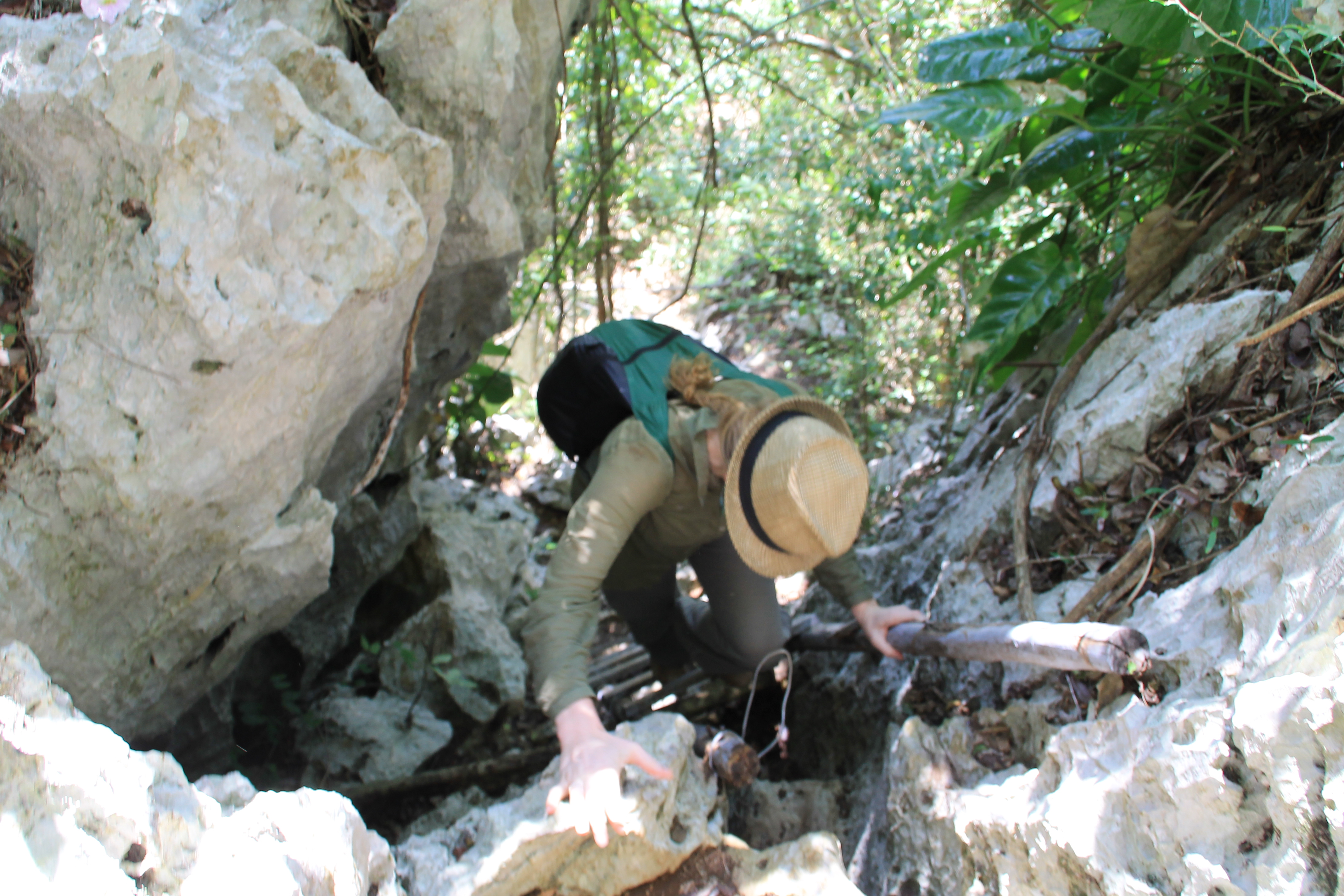
That ladder with missing stairs
Climbing the ladder was indeed a bit dangerous but definitely doable. That was basically the hardest part of the trail. When we arrived in the valley, we were instantly mesmerized: endless lowland covered with clear green tobacco plants and the huge rocky cliffs rising like islands from the bottom of the valley are called mogotes.
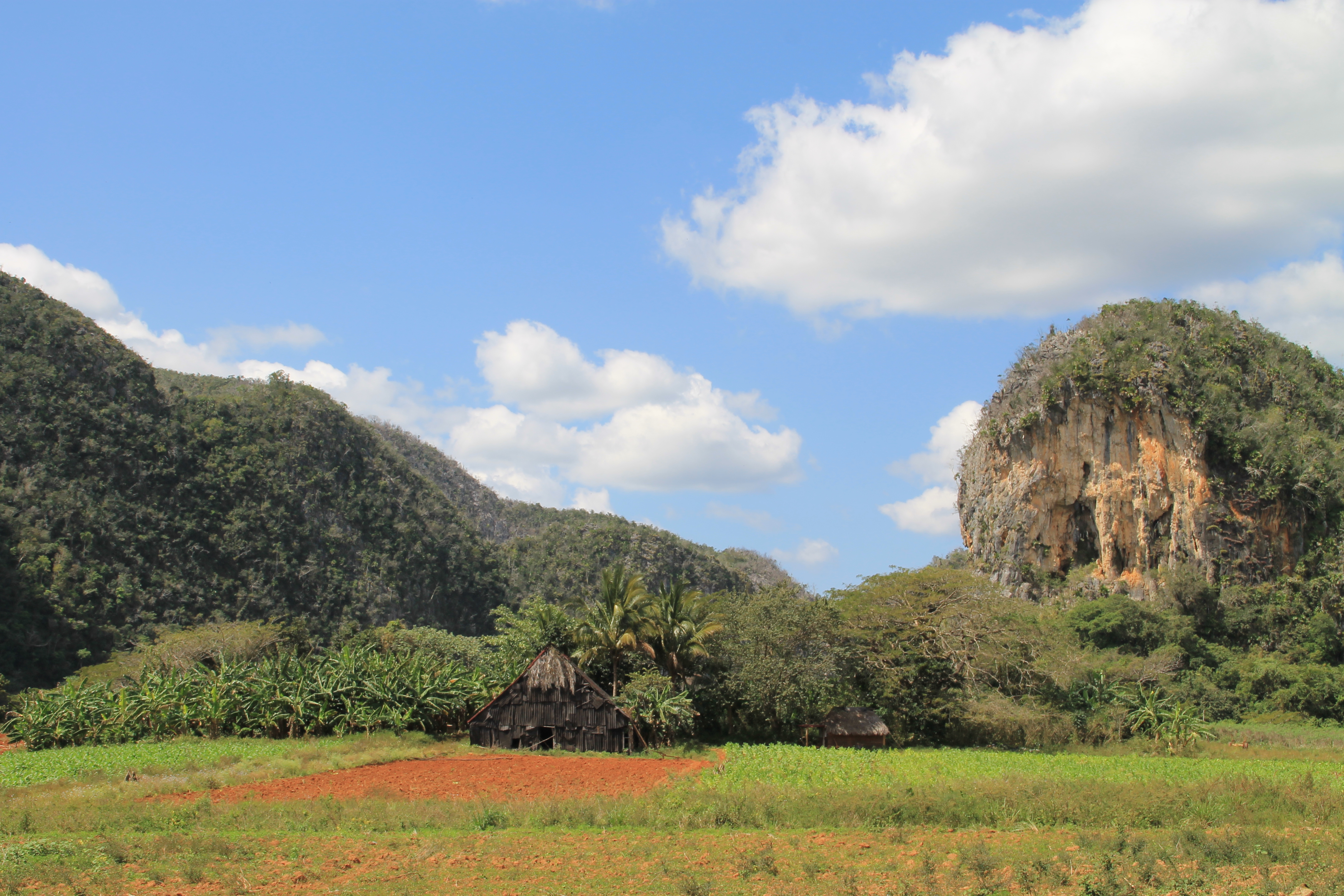
Mogotes
On our way we met tobacco farmers and were invited inside the construction where tobacco was dried. Tobacco and other crops are grown and harvested mostly by traditional agriculture techniques, a lot of manual work involved. A small tip: take little presents for the farmers with you – they will be sincerely glad. Pens, soap, painkillers will be appropriate.
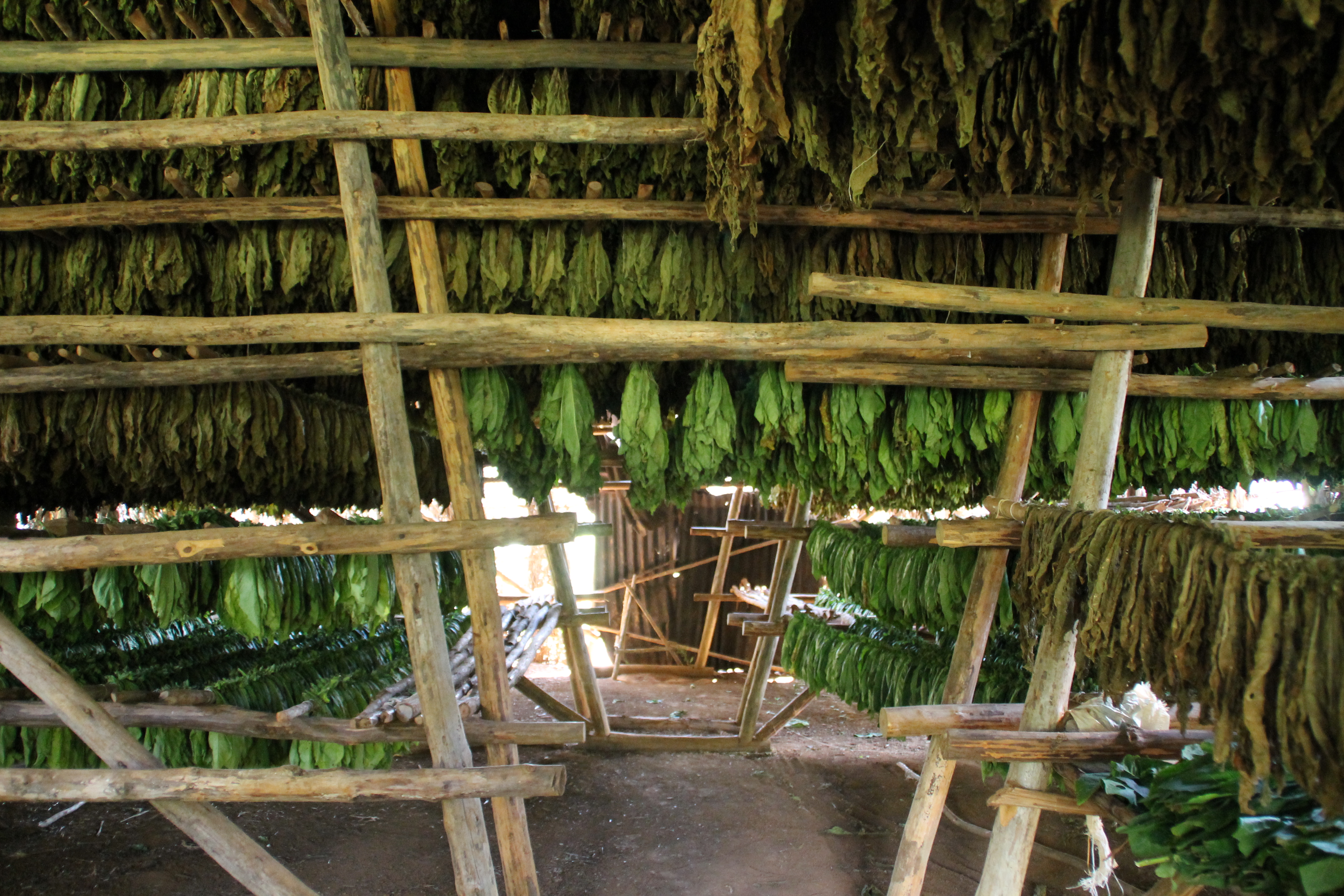


Tobacco production
We hiked about 1,5 hours and reached a small village with a cafe (the name of the cafe is Ranchon Laguna de Piedra and the freshlz squizzed juice is yummy). The owner of the café has shown us how they squeeze juice from sugarcanes. It was so saccharine sweet; I couldn’t make even a sip.
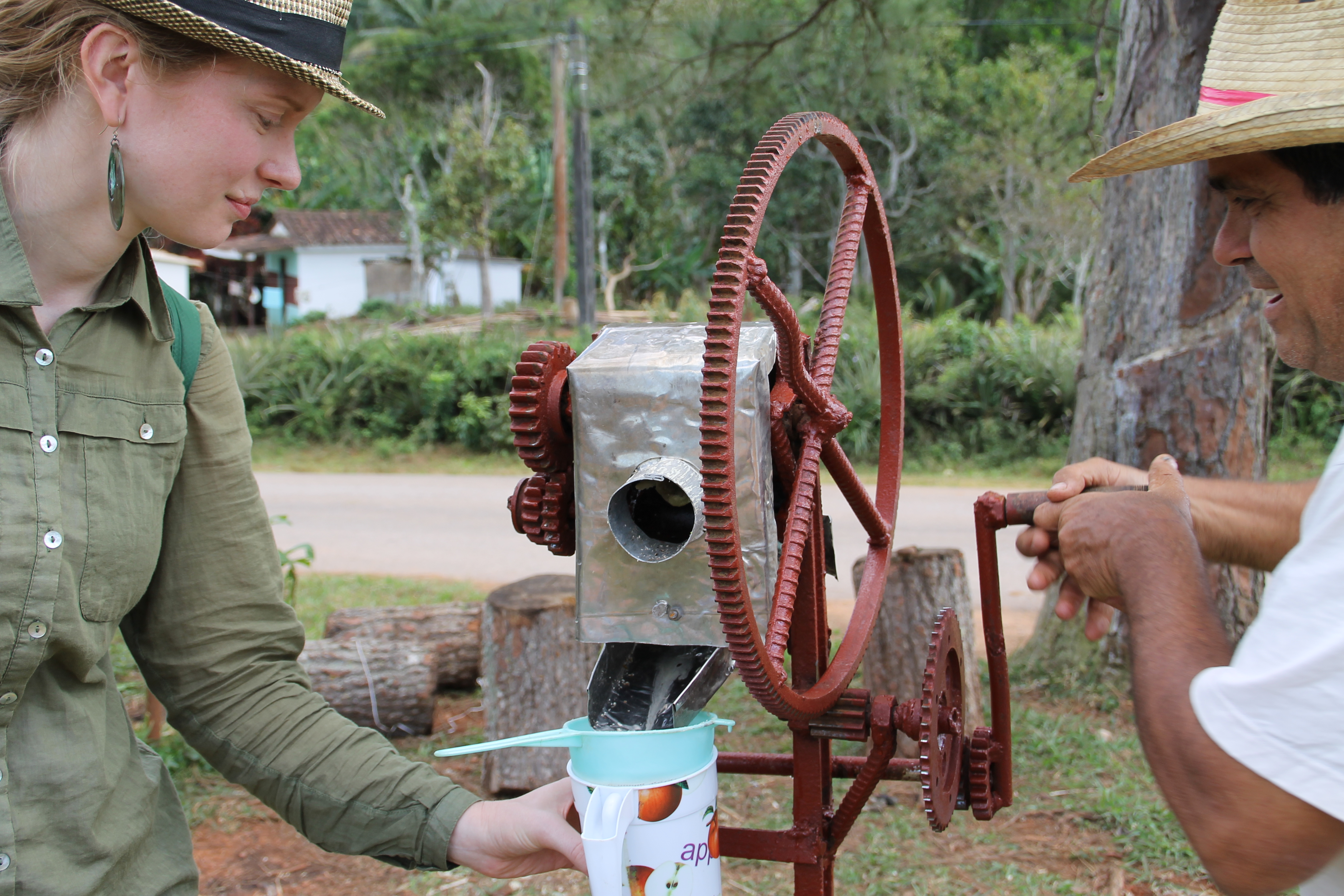
Sugar water pump
- Havana
The capital of Cuba, the biggest and most beautiful city in the courty, a trademark. We loved it a lot. Therefore I left the Havana part for dessert.
The city is impressive: I could imagine how spacious, beautiful and exquisite the city center was couple of decades back. Now many buildings stay abandoned and decaying… Some are being renovated – there is a lot of construction work ongoing in the city.

Showing off
Mere strolling along the streets is fascinating: here and there again you notice a remarkable detail on the house facade; hundreds of old-timers are parked and driving – this cliché is absolutely true and is fascinating – I couldn’t stop shooting photos. However, in general, we had an engrossing sad feeling of irrevocably fading luxury.

La Habana
We found a very authentic local restaurant in the heart of the city: “Don Omar”, Bernaza 164, between streets Lamparilla and Teniente Rey. It is easy to pass by and not notice it – you have to go inside the building and take the steps to the first floor. If you climb the steps to the very top, you will see the real living conditions of many Cubans: old, poor, decaying houses with the view to the dazzling El Capitolio – again this Cuban pivotal diversity.

View to the El Capitolio and glance into simple people’s life
On our last night we decided to explore the night life and go the Fabrica de Arte Cubano (Calle 26, La Habana http://www.fac.cu/) – a huge artistic area, club, open-air bar and restaurant on the outskirts of the city. We went there on Monday without knowing that the club is open only Thursday to Sunday. Enjoying a Pina Colada and a cigar in the rooftop bar was not a bad substitute as well. This open-air bar I could imagine in any big city in the world: modern though very cozy, with the liberating feeling of freedom and timelessness… Only the Pina Colada was keeping me on earth – it was sooo creamy and heavy that I, an endless admirer of this cocktail, couldn’t finish it the very first time in my life. On the way back to our casa we negotiated a good price with the taxi driver who will pick us up timely and bring us to the airport on the next day.
Those were some of our impressions about Cuban cities. Next (and last) part will reveal some peculiarities about Cuba and Cuban lifestyle. Stay tuned!

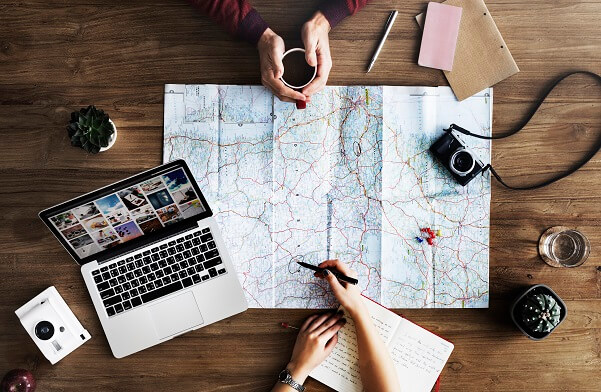
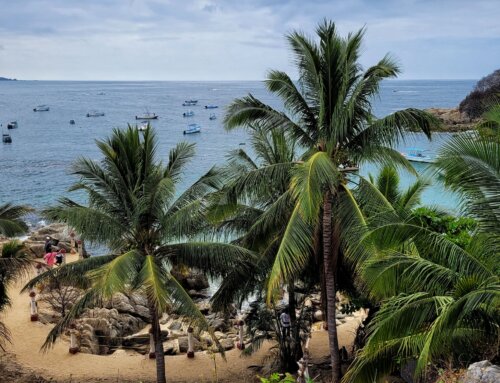

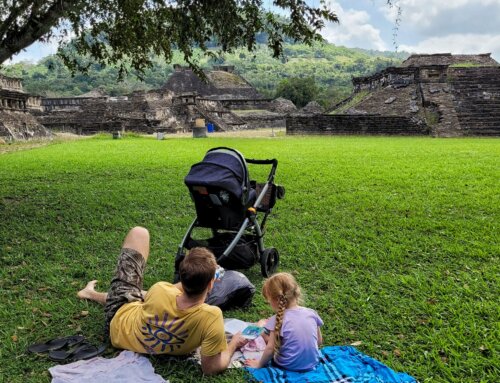
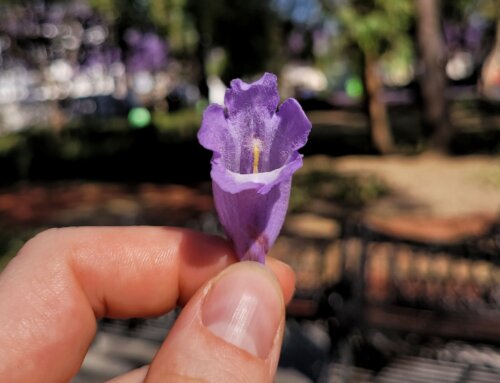
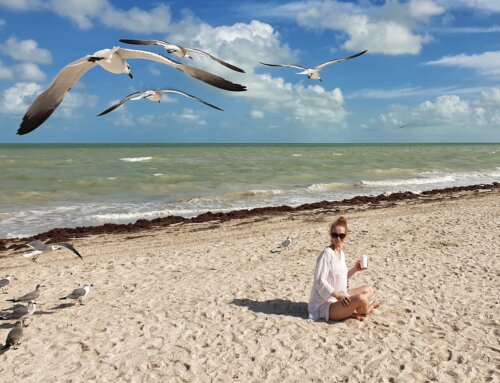
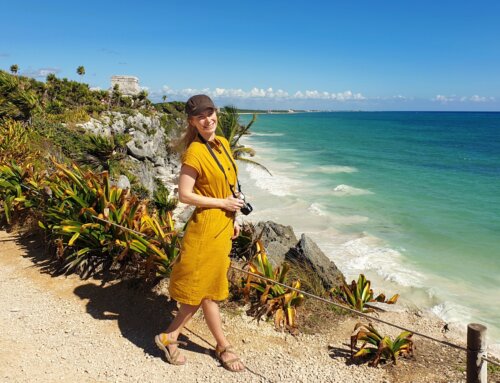
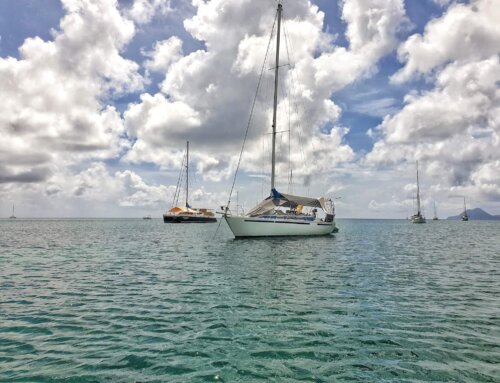
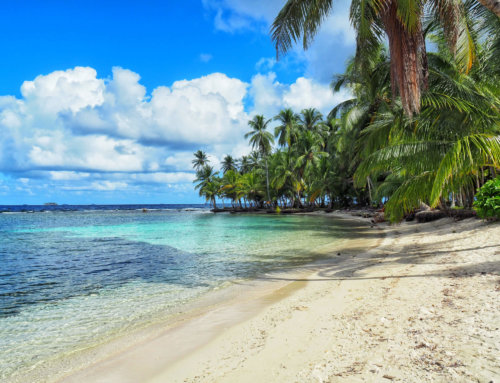
Leave A Comment